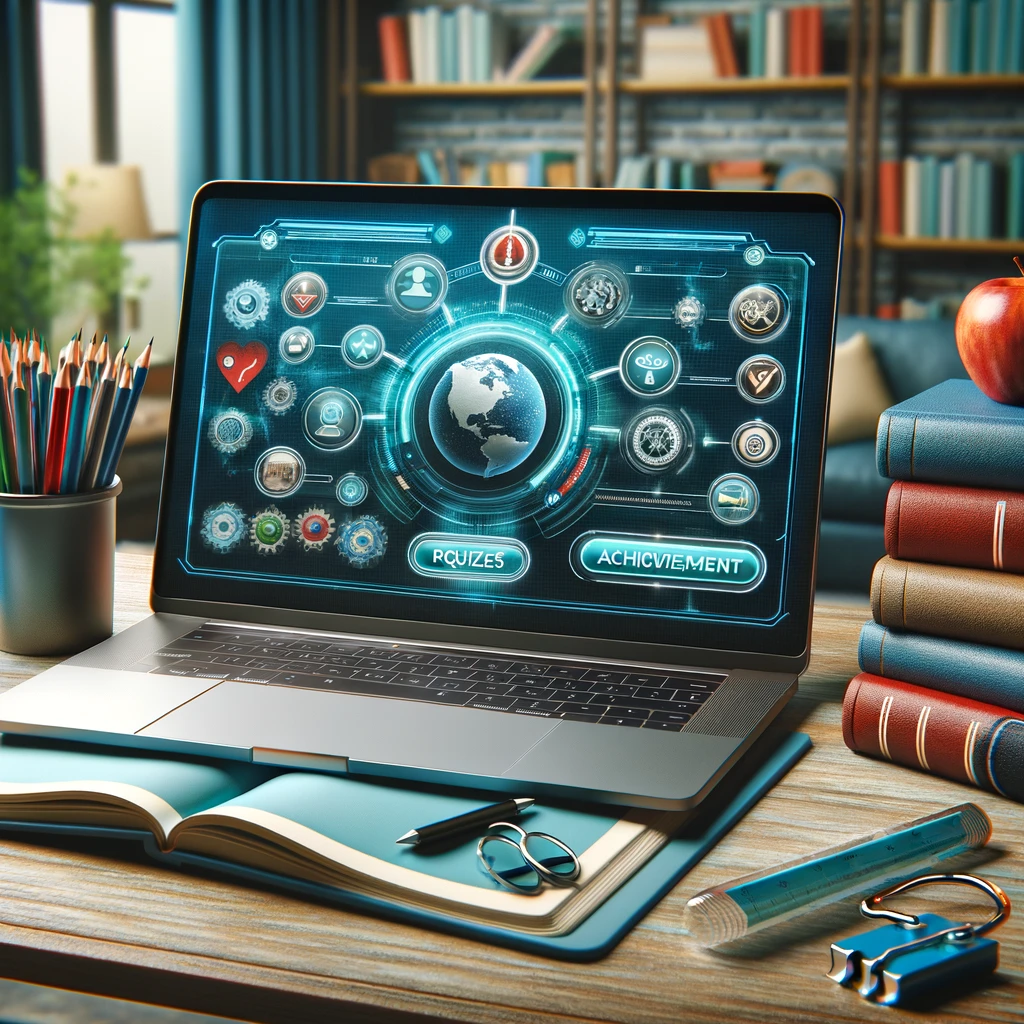Introduction to the Future of Learning
The landscape of education is undergoing a profound transformation, driven by advancements in technology, changing student needs, and evolving societal demands. As we step into a new era, the future of learning promises a dynamic and adaptive environment that caters to the individual needs of every learner. In this article, we explore the emerging trends and transformations reshaping education, from personalized learning experiences to the integration of cutting-edge technologies.
Shift Towards Personalized and Adaptive Learning
Customized Learning Experiences
Education is no longer confined to a one-size-fits-all approach. The future of learning embraces personalized learning experiences tailored to the unique strengths, interests, and learning styles of each student. From adaptive curriculums to individualized feedback, students receive targeted support that maximizes their potential.
Benefits of Adaptive Learning Technologies
Adaptive learning technologies play a pivotal role in this shift, utilizing algorithms to analyze student performance and adjust coursework accordingly. These technologies identify areas of strength and weakness, providing targeted resources and activities to address specific learning needs. The result is a more efficient and effective learning process that empowers students to excel at their own pace.
Embracing Online and Hybrid Learning Models
Rise of Online Learning Platforms
The digital revolution has ushered in an era of online learning platforms, offering a wealth of educational resources at the fingertips of learners worldwide. From massive open online courses (MOOCs) to interactive virtual classrooms, students can access high-quality education from anywhere with an internet connection.
Blending Traditional and Digital Learning Environments
Hybrid learning models combine the best of both worlds, blending traditional classroom experiences with online tools and resources. This approach allows for flexibility in learning, accommodating diverse schedules and learning preferences. Students benefit from the convenience of online materials while still engaging in face-to-face interactions with peers and educators.
Integration of Artificial Intelligence in Education
AI-Powered Learning Assistants
Artificial intelligence (AI) is revolutionizing the educational landscape with intelligent learning assistants. These AI-driven tools offer personalized recommendations, answer student queries in real-time, and adapt learning materials based on individual progress. AI-powered tutors provide instant feedback, guiding students through challenging concepts with ease.
Enhancing Student Engagement and Performance
AI algorithms analyze vast amounts of data to identify patterns in student behavior and learning outcomes. Educators can leverage these insights to tailor instruction, create targeted interventions, and track student progress more effectively. As a result, student engagement increases, and academic performance improves.
The Role of Virtual and Augmented Reality in Education
Immersive Learning Experiences
Virtual reality (VR) and augmented reality (AR) technologies transport students to immersive learning environments, whether exploring ancient civilizations or conducting virtual science experiments. These interactive experiences enhance comprehension and retention by providing a hands-on, sensory-rich learning experience.
Applications in STEM Education and Beyond
In STEM (Science, Technology, Engineering, and Mathematics) fields, VR and AR open doors to new realms of exploration. Students can dissect virtual organisms, simulate complex engineering designs, and visualize abstract scientific concepts. Beyond STEM, these technologies find applications in history, art, geography, and more, bringing subjects to life in unprecedented ways.
Importance of Data Analytics in Education
Utilizing Data for Personalized Insights
Data analytics tools gather valuable information on student progress, engagement levels, and learning preferences. Educators can analyze this data to identify trends, pinpoint areas of improvement, and tailor instruction to meet individual needs.
Enhancing Teaching Methods and Student Outcomes
Data analytics also empowers educators to refine their teaching methods for maximum impact. By analyzing student performance trends, teachers can experiment with different instructional strategies, resources, and assessments. This iterative process of improvement ensures that teaching practices evolve to meet the changing needs of students, ultimately leading to better learning outcomes.
Empowering Educators with Professional Development
Training for Digital Teaching Tools
As the landscape of education evolves, educators must stay abreast of the latest digital teaching tools and technologies. Professional development programs provide teachers with the training and resources needed to effectively integrate these tools into their classrooms. Workshops, webinars, and online courses equip educators with the skills to navigate virtual platforms, design engaging digital lessons, and leverage data analytics for student success.
Continuous Learning for Effective Instruction
The future of learning demands a commitment to continuous learning among educators. Lifelong learning opportunities allow teachers to stay informed about emerging trends, pedagogical approaches, and best practices in education. By engaging in ongoing professional development, educators remain dynamic and adaptable, ready to meet the evolving needs of their students and the changing landscape of education.
Accessibility and Inclusivity in Learning
Ensuring Education Reaches All Learners
In the pursuit of educational innovation, it is crucial to ensure that learning opportunities are accessible to all learners. Technology plays a pivotal role in breaking down barriers to education, offering solutions for students with diverse learning needs. From captioned videos for hearing-impaired students to screen readers for visually impaired learners, digital tools enhance accessibility and create inclusive learning environments.
Tools for Diverse Learning Needs
The future of learning embraces a range of assistive technologies to cater to diverse learning needs. Speech-to-text software aids students with dyslexia, while tactile learning tools support learners with sensory processing disorders. By providing a spectrum of tools and resources, educators empower every student to thrive and succeed in their educational journey.
Preparing Students for Future Careers
Skills Development for a Changing Workforce
In an era of rapid technological advancement and automation, the skills required for future careers are evolving. The future of learning emphasizes the development of critical thinking, problem-solving, creativity, and collaboration skills. Project-based learning, entrepreneurship programs, and internships equip students with the practical skills and real-world experiences needed to excel in diverse career paths.
Career-Focused Education Pathways
The traditional notion of a linear career path is giving way to a dynamic landscape of opportunities. The future of learning encourages students to explore their passions and interests through specialized pathways. From STEM academies to vocational programs, students can tailor their education to align with their career aspirations, ensuring a seamless transition from learning to employment.
The Impact of Final Grade Calculator in Modern Education
Tracking Academic Progress
The Final Grade Calculator continues to be a valuable tool for students in modern education. By inputting grades for assignments, tests, and projects, students can monitor their academic progress in real-time. This transparency enables students to identify areas of strength and weakness, allowing for targeted study efforts and improvement plans.
Setting Goals for Academic Success
Moreover, the Final Grade Calculator serves as a motivator for students to set academic goals and strive for excellence. By visualizing the grades needed to achieve desired final grades in courses, students can stay focused and driven throughout the semester. This goal-setting aspect of the calculator instills a sense of accountability and ownership in students for their academic journey.
Utilizing Sig Fig Calculator for Practical Learning
Precision in Scientific and Mathematical Studies
In the realm of scientific and mathematical studies, precision is paramount. The Sig Fig Calculator plays a crucial role in ensuring accurate calculations, particularly in experiments, research, and problem-solving scenarios. By automatically determining the appropriate number of significant figures, the calculator simplifies complex calculations and reduces the margin for error.
Applications in Research and Problem-Solving
Whether calculating measurements in chemistry experiments or analyzing data in physics simulations, the Sig Fig Calculator streamlines the process for students. This practical tool not only enhances the accuracy of results but also promotes a deeper understanding of the significance of precision in scientific studies. Students gain hands-on experience in applying mathematical concepts to real-world situations, preparing them for future endeavors in research and problem-solving.
Addressing Challenges in the Future of Learning
Digital Divide and Access to Technology
One of the primary challenges in the future of learning is the digital divide—the gap between those with access to technology and those without. To address this disparity, educators and policymakers must work towards ensuring equitable access to devices, internet connectivity, and digital resources for all students. Initiatives such as providing laptops for disadvantaged students, expanding broadband infrastructure in rural areas, and offering subsidized internet plans help bridge the digital gap.
Maintaining Student Engagement in Virtual Environments
Another challenge of virtual learning environments is maintaining student engagement and motivation. Educators must employ innovative teaching strategies that foster interactivity, collaboration, and active participation. Incorporating gamification elements, virtual group projects, interactive simulations, and multimedia resources captivates students' interest and makes learning engaging and enjoyable.
Collaborative and Project-Based Learning
Fostering Teamwork and Creativity
Collaborative learning environments nurture essential skills such as teamwork, communication, and problem-solving. The future of learning emphasizes project-based assignments and group projects that require students to collaborate, brainstorm ideas, and work towards shared goals. By working together on meaningful projects, students develop a sense of camaraderie, creativity, and accountability.
Real-World Applications of Knowledge
Project-based learning immerses students in real-world scenarios, bridging the gap between theory and practice. Whether designing sustainable cities, creating marketing campaigns, or developing scientific experiments, students apply classroom knowledge to tangible projects with practical implications. This hands-on approach not only reinforces learning but also cultivates a sense of purpose and accomplishment.
The Evolution of Assessment Methods
Moving Beyond Traditional Exams
Traditional exams are evolving to reflect the changing demands of the future workforce. Assessments now encompass a range of methods, including performance-based tasks, portfolios, presentations, and simulations. These multifaceted assessments offer a holistic view of student learning, measuring not just rote memorization but also critical thinking, creativity, and application of knowledge.
Performance-Based Assessments and Portfolios
Performance-based assessments focus on students' ability to apply knowledge and skills in authentic contexts. From creating multimedia presentations to solving real-world problems, students demonstrate their competencies through hands-on tasks. Portfolios showcase students' growth and achievements over time, offering a comprehensive view of their educational journey.
Conclusion: Embracing Educational Innovation
The future of learning is characterized by innovation, adaptability, and inclusivity. As we navigate the complexities of a rapidly changing world, education must evolve to meet the needs of diverse learners and prepare them for success in an ever-evolving landscape. From personalized learning experiences to cutting-edge technologies, the future of learning holds boundless possibilities for student growth, engagement, and achievement.


No comments yet